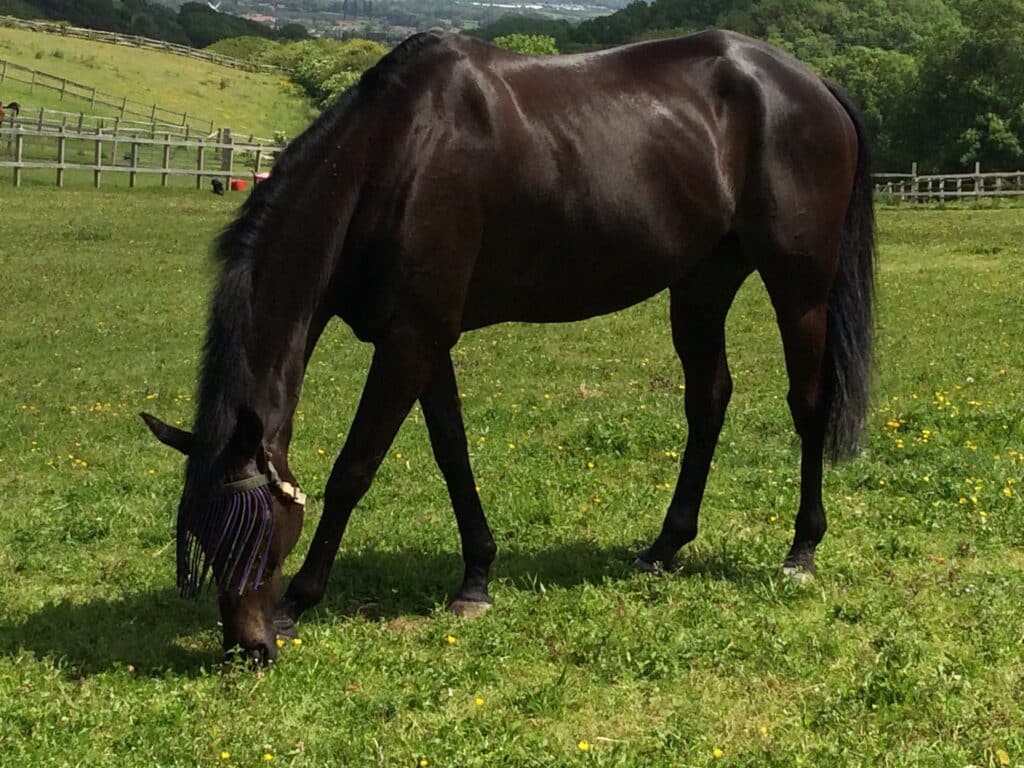Colic, Veterinary
Colic in horses
Dr Emma Shipman and Dr Julia Dubuc, discuss the causes and prevention of colic in horses
As previously identified By Dr Emma Shipman in an earlier feature in this series (Types of colic), multiple different types of colic in horses exist. Certain attributes of horses make them more at risk to develop colic. For example, broodmares are prone to displacements of the large bowel (large colon volvulus) following foaling, as there is more room in the abdomen for the bowel to move and twist on itself. In the same vein, larger size horses, which inevitably have larger abdomens are also more at risk of suffering a displacement. On the other hand, being a gelding has been identified as a risk factor for colic, this time involving the small bowel.
The risk factors
Risk factors associated with severe abdominal pain – colic in horses, can be divided into three categories:
- Horse-related
- Management-related
- Environment-related factors
The most important of these, and one owners can potentially have control over, is a change in management. The most recognized risk factor associated to management is a change in diet. Indeed, studies have shown that horses are at increased risk of suffering from colic with a change in their concentrates or hay. In addition, a recent change in housing or stabling has been identified as an increased risk for colic as well as a decrease in access to water or not having free access to water at all.Pasture access also appears important, as a recent decrease in pasture turn out or no access at all also increase the risks of colic.
“The most recognised risk factor associated to management is a change in diet”
Horses which are cared for by their owner only, would be at reduced risks compared to horses cared for by multiple different individuals. Regarding parasitic control, the data is slightly more scarce but it has been shown that horses that were not part of a regular worming program have increased risks of suffering colic. Foals and young stock often have more immature and poorly developed innate immunity to gastrointestinal parasites, resulting in high burdens. Parascaris equorum (the big white adult worm easily seen in faeces) can be particularly troublesome by causing physical blockage of the small intestine in high numbers.

Prevention
Surgical prevention of colic is a newer aspect of colic management and includes multiple different possibilities. The goal is to ensure that whatever type of surgical colic happened before, does not recur again. Indeed, surgical prevention of colic will usually be reserved to repeat offenders, so for horses that have had a surgical colic in the past and, are now suffering the same type of colic again. Examples of colic prevention surgeries are to permanently fix a piece of bowel in its normal place to ensure it does not move again (usually for large colon), to remove the bowel to avoid it displacing again or, to occlude a hole in the abdomen, where bowel has been stuck in the past.
Certain prevention surgeries can be performed during the initial colic surgery under general anaesthesia, whereas others constitute a second surgical procedure altogether, usually performed under standing sedation once the horse has successfully recovered from the first intervention. These procedures are not recommended for all horses and surgeons will openly discuss the possible complications of these techniques with owners at the time.
For further information on a wide range of issues related to colic visit bhs.org.uk/colic
Oakham Veterinary Hospital is a BHS Vet REACT Colic Champion www.oakhamvethospital.co.uk




